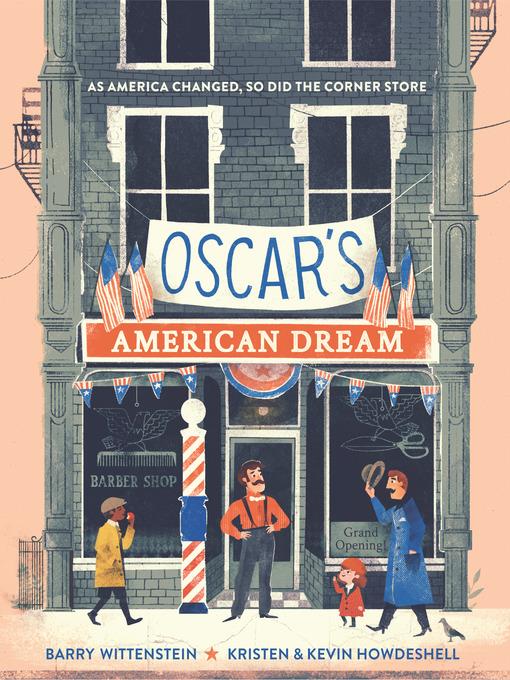
Oscar's American Dream
فرمت کتاب
ebook
تاریخ انتشار
2020
Lexile Score
960
Reading Level
5-6
نویسنده
Kevin Howdeshellشابک
9780525707714
کتاب های مرتبط
- اطلاعات
- نقد و بررسی
- دیدگاه کاربران
نقد و بررسی

August 15, 2020
The evolution of a New York City corner store reflects 20th-century American history. From Ellis Island immigration through women's suffrage to the civil rights movement, Wittenstein endeavors "to better understand the past by looking at just one building." The titular Oscar, a Polish immigrant, opens a barbershop in 1899. Over the next 100 years, the businesses reflect the times: a Great Depression soup kitchen, a World War II Army recruitment center, and so on. The Howdeshells' illustrations, Rockwellian in feel, are beautifully rendered and offer many details to examine--and historical cues for adult readers to point out. While Oscar appears only briefly at the beginning, the title is apt, as Wittenstein's device means his synopsis of American history is told primarily from a White, European lens. Unfortunately, aside from one Puerto Rican shop proprietor, Moises, who comes along fairly late in the narrative, children of color will mostly see reflections of themselves as side characters. Their inclusion makes for diverse scenes but ultimately conveys idealistic portraits of integrated American life even in the eras prior to the Civil Rights Act of 1964. For a more diverse slant on New York City immigration, consider Dave Eggers and Shawn Harris' Her Right Foot (2017). (This book was reviewed digitally with 11-by-17-inch double-page spreads viewed at 59.3% of actual size.) Celebrates a disappointingly exclusive dream. (author's note) (Picture book. 5-9)
COPYRIGHT(2020) Kirkus Reviews, ALL RIGHTS RESERVED.

October 1, 2020
Gr 1-4-The store at the corner of Front Street and 2nd Avenue takes center stage in a book that brings readers along through 100 years of history against the background of just one building. It all begins with Oskar, an Ellis Island immigrant, who opens a barber shop there. When Oscar, now sporting an Americanized spelling of his first name, moves on to pursue another path, the building's use changes as well. Each passing chapter in American history is depicted through a change in the corner store's owners and their unique American dreams. The illustrations, pen and pencil drawings (hand drawn and digitally rendered) in muted tones, add depth to the story with detailed imagery that breaths life into the ever-changing corner store. The story line is reflective of a mostly Eurocentric American experience; until Moises, who is Puerto Rican, appears later in the text, the shop owners are all white. Supporting illustrations depict a higher degree of diversity in the population. VERDICT An interesting fictional lens through which to view history but an additional purchase for most school libraries.-Jessica Caron, Bancroft Sch., MA
Copyright 2020 School Library Journal, LLC Used with permission.

November 1, 2020
Grades K-2 The twentieth century brought great change to American cities and society, and Wittenstein--continuing his oeuvre of nonfiction and fictionalized history (including 2019's A Place to Land: Martin Luther King Jr. and the Speech That Inspired a Nation)--carries readers from the 1890s to 1999, showing the change along the way. The barbershop storefront of an Ellis Island immigrant transforms over time, morphing through new building owners and times until finally a candy shop becomes displaced by plans to raze the building to make way for luxury apartments, reflecting cycles of urban change. The storefront's use--barbershop, dress shop, soup kitchen, army recruiting office, bodega, electronics store--gets a lively multicultural treatment by the Howdeshells, husband and wife illustrators. Spreads use a palette of mostly greenish-blue, mustard yellow, and rusty red, linking the eras along with details like a barber pole, window posters, and signage etched above the store's door. Meanwhile, clothes and accoutrements reflect differences, from flapper dresses to bell bottoms, black baby buggies to skateboards. A solid introduction to a history that includes immigrant dreams.
COPYRIGHT(2020) Booklist, ALL RIGHTS RESERVED.

























دیدگاه کاربران